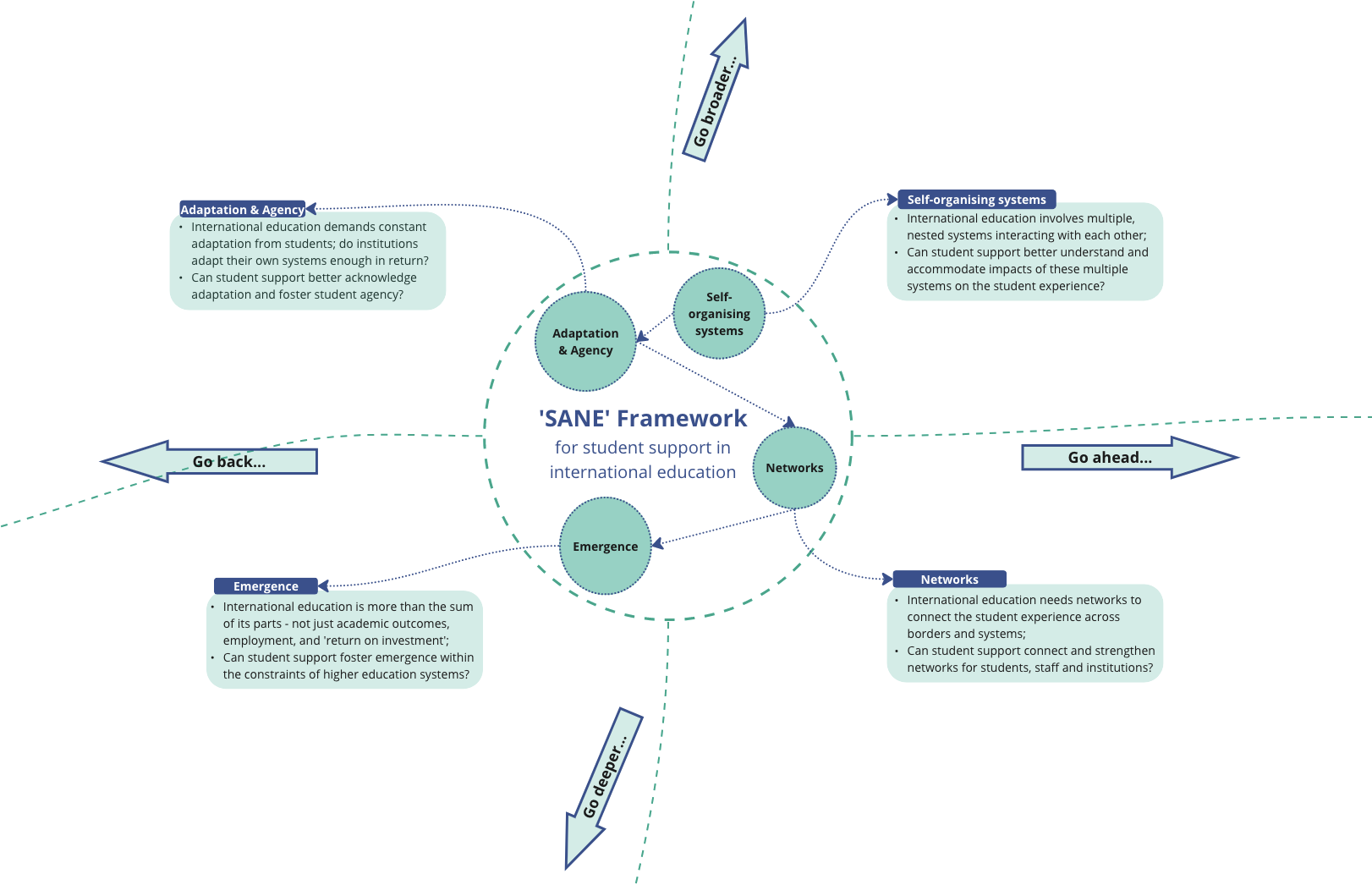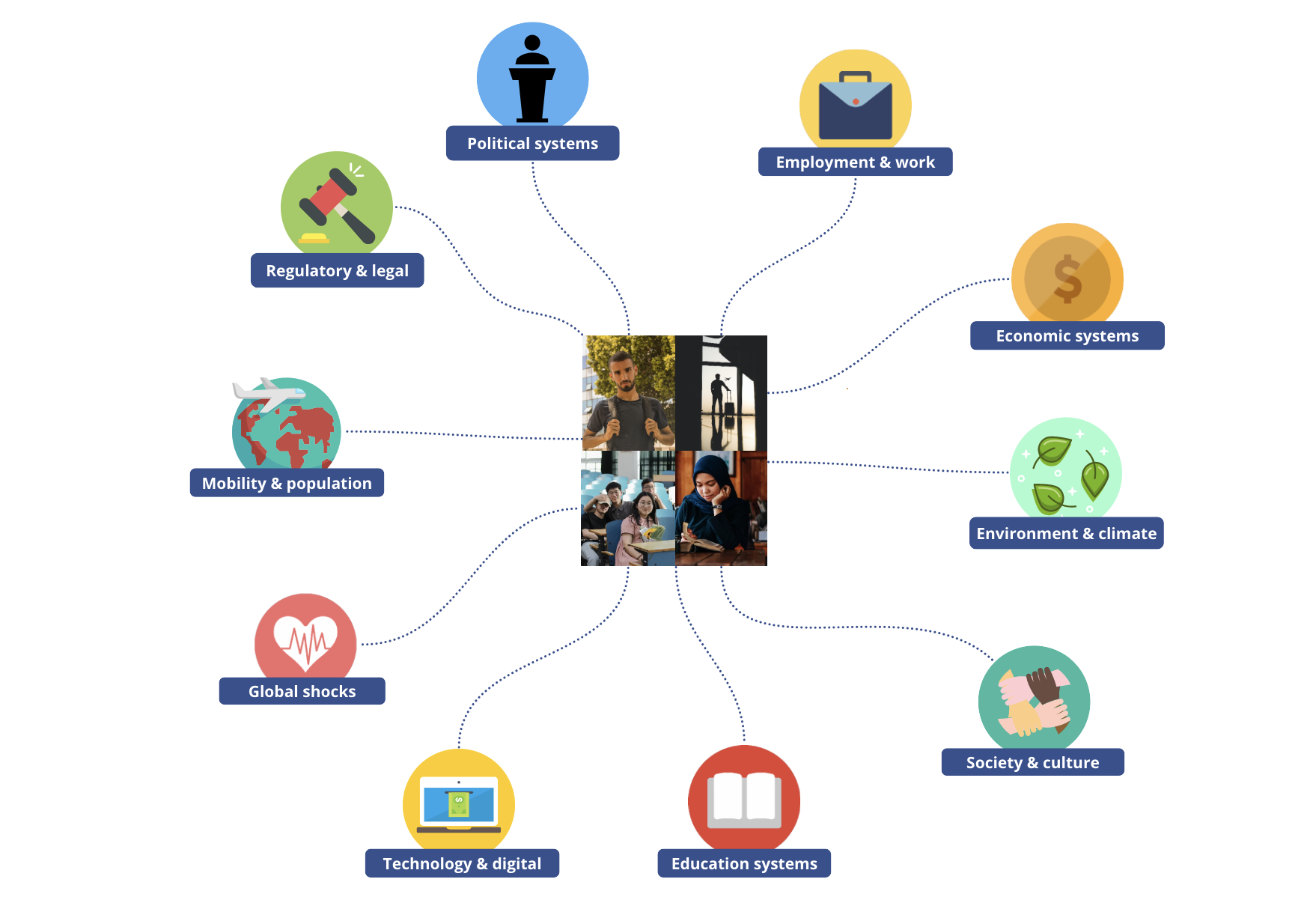Meet complexity with the ‘SANE’ Framework
"[complexity theory] forces creativity, rather than recycling the old and familiar; it is a theory of perpetual novelty, disequilibrium and creativity; and it is a restatement of the need for humility and humanity in admitting that our knowledge, though only partial and incomplete, may be the best that we can do.” (Morrison, 2008)
Complexity theory, say hello to international education. I think you may have known each other for a while, but perhaps didn’t have the words to express what you mean to each other. I think it’s time you were properly introduced.
Why complexity?
Complexity theory has evolved as a transdisciplinary theory, initially developed in disciplines such as biology, chemistry, physics, and economics during the 20th century. It has been of increasing interest in the social sciences and education in recent decades, with its focus on nonlinearity, diversity, adaptation, networks, and systems. In the absence of quick, neat definitions, systems are a helpful way to engage with the theory, as researcher Claire Hansen explains:
Complex systems are dynamic, self-organising, evolving networks that operate without central control. These systems include something as small as an ant colony, as diverse as a rainforest, as complicated as the human brain, as unpredictable as the weather, as dispersed as a city, or as large as the cosmos itself. (Hansen, 2014)
The SANE framework emerged through a personal 6 week deep-dive to explore how complexity theory might help institutions better support international students. In a sector dominated by numbers, targets, politics, and a 'deficit' view of international students, complexity theory pushes back, surfacing the messy, interconnected systems, constant evolution and unpredictable emergence of the student experience.
Exploring the SANE Framework for student support
As the diagram above suggests, four key aspects of complexity theory are particularly useful as a lens on the international student experience. Here’s a very brief overview of how I’m conceptualising these in this educational context, and some initial prompts to start you thinking.
S is for Self-Organising Systems
International education involves multiple, nested systems interacting with each other. Some of the most prominent systems include society and culture, economic systems, climate, education, technology, mobility, regulatory and political systems. Can student support better understand and accommodate impacts of these multiple systems on the student experience?
A is for Adaptation, but also Agency
International education demands constant adaptation from students, who are in an unfamiliar country, speaking a different language, engaging with unfamiliar education norms and without the support systems around them they may have at home. Do institutions adapt their own systems enough in return? Can student support both acknowledge these ongoing adaptations and also foster student agency and ownership of their learning experience?
N is for Networks
International education needs networks to connect the student experience across borders and systems. Our institutions are highly networked with stakeholders around the world, from offshore teams to education agents and governments. Students also need networks, both to support their academic and social experience, but also for work and career progression. Can student support connect and strengthen networks for students, staff and institutions?
E is for Emergence
International education is more than the sum of its parts - not just academic outcomes, employment, and 'return on investment'. Emergence means allowing for a certain flexibility in how learning and student experiences unfold, especially given the complexity of the interweaving systems in and around the sector. Can student support foster emergence within the constraints of higher education systems?
Explore the SANE Framework in Miro
As you can probably tell, we’re only just getting started. You’re invited to be part of this ‘emergent’ exploration of complexity theory for international education - come on over to the SANE Framework for student support in Miro and start peeling back the layers for yourself. Explore a virtual complexity library with readings, videos and podcasts, build your own system maps and student journeys, and plan with your team how complexity could look for different stakeholders.
If you’re already using a complexity lens in your work, I’d love to hear from you. If you’d like to explore how we can use the SANE Framework in higher education teams, workshops and strategic planning, get in touch - let’s meet complexity with complexity!



